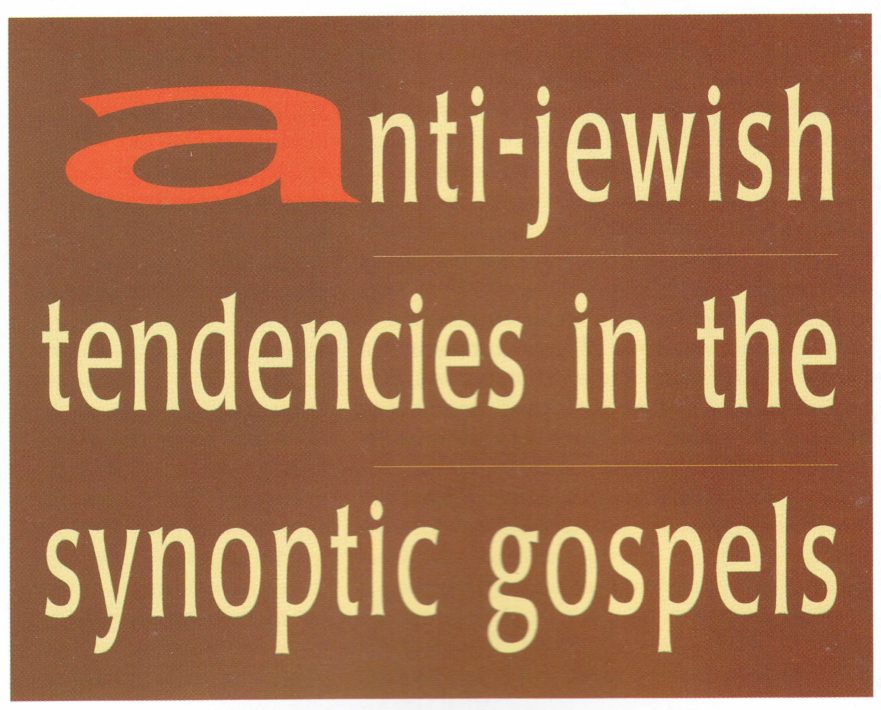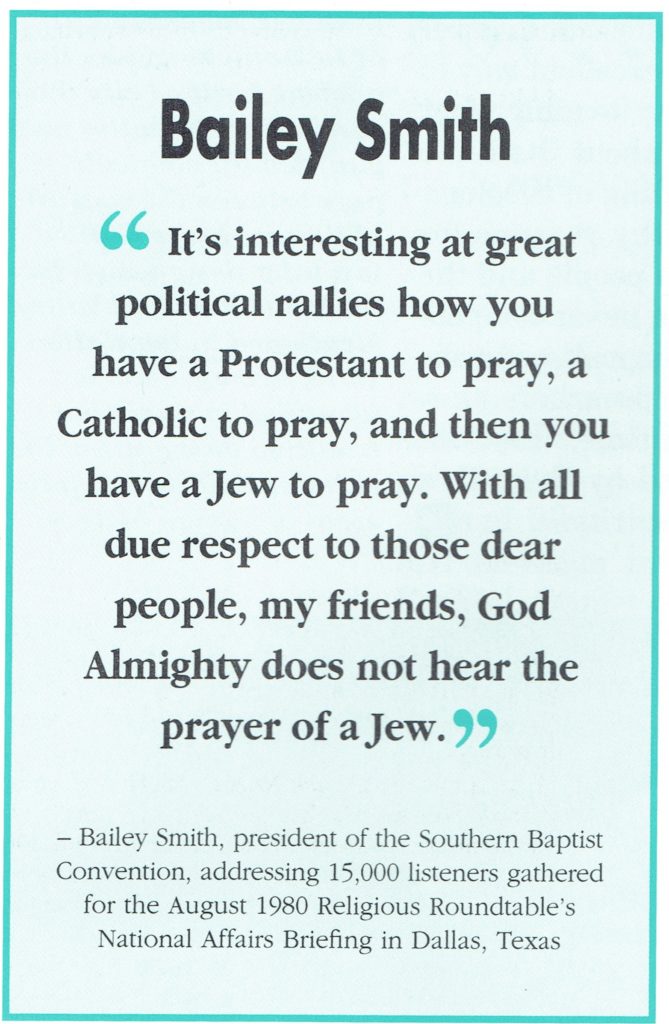How to cite this article: R. Steven Notley, “Anti-Jewish Tendencies in the Synoptic Gospels,” Jerusalem Perspective 51 (1996): 20-35, 38 [https://www.jerusalemperspective.com/2773/].
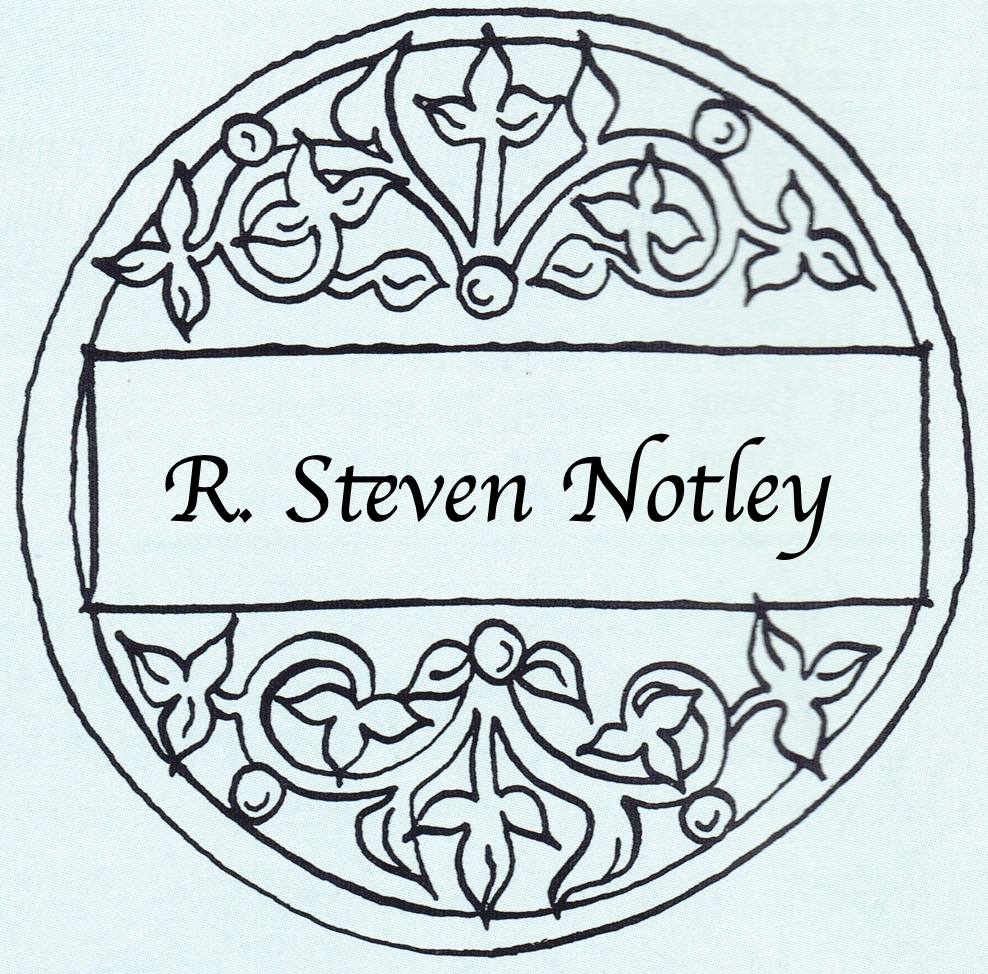
Was Jesus anti-Semitic? Did he actually reject particular aspects of his own Jewishness? Some verses in the Gospels do appear anti-Jewish. However, did these anti-Jewish tendencies begin with Jesus and his followers or did they originate elsewhere? A thorough examination of the Gospels reveals that not all of the accounts are identical in their presentation of Jesus and his contemporaries. Each of the writers has left his own individual style on his composition. In this study we will carefully consider the differing accounts in hope of determining whether anti-Jewish or anti-Judaistic sentiments belonged to Jesus and his first followers. For the purposes of the study I have ordered the Gospels according to their increasing anti-Jewish sentiment.
Premium Members and Friends of JP must be signed in to view this content.
If you are not a Premium Member or Friend, please consider registering. Prices start at $5/month if paid annually, with other options for monthly and quarterly and more: Sign Up For Premium
Conclusion
In this brief study I have tried to demonstrate that at its earliest stage the church was marked by a relative freedom from anti-Jewish sentiment. However, the natural evolution of early Christianity from its Jewish context brought tensions that have penetrated even into the early strata of the synoptic tradition. Mark amplified the conflict between Jesus and his contemporaries. Mark’s primary motives were to present Jesus as an abandoned Messiah. For the most part, he possessed no anti-Jewish penchant.
The gospel of Matthew, on the other hand, possesses a number of anti-Jewish statements that may be the work of a later Gentile scribe. These revisions paint the entire Jewish nation as culpable for the death of Jesus. In the scribe’s thinking, Israel had been rejected in lieu of the Gentile church. These ideas reflect little of Jesus’ own thinking or experience. Ironically, Jesus himself knew of some in his own day who saw the people of Israel as rejected and viewed themselves as the sole custodians of the holy Scriptures and the holy place. To these first-century supplanters—the Samaritans—Jesus’ response was simple but categorical: “Salvation is of the Jews” (John 4:22).
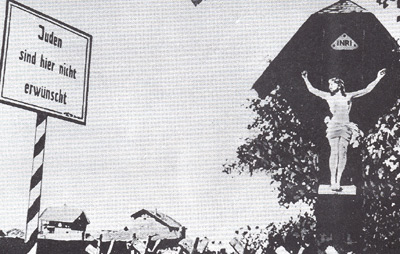
For readers’ reactions to this article and responses from the author, R. Steven Notley, and the editor, David Bivin, see these Readers’ Perspective posts: “Disgusting Illustrations Distract from Worthy Content!“; “If a Jew mistreats a Jew, does that make him anti-Semitic?“; “What is the Jerusalem School’s hermeneutical criterion?“; and “Mark’s Account of the Cleansing of the Temple: Literary Device or Historical Fact?“
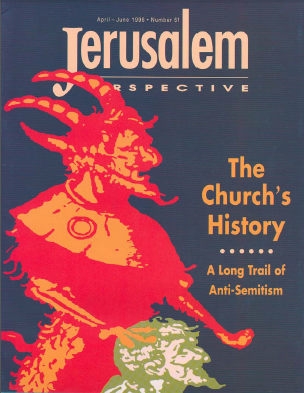
- [1] Pharisees are also presented in a positive light in Acts. Gamaliel (Acts 5:34) is said to be honored, and there are Pharisees numbered among the early Christians (Acts 15:5). Paul in his speech before the Sanhedrin does not shy away from his identification with the Pharisees (Acts 23:6). ↩
- [2] See C. O'Neill, “The Attitude to the Jews,” in The Theology of Acts in Its Historical Setting (London: S.P.C.K., 1970), 77-99; J. Dupont, The Sources in Acts (London: Dartman, Longman & Todd, 1964). ↩
- [3] See John C. Hawkins, Horae Synopticae (2nd ed.; Oxford: Clarendon Press, 1909), 80-107. ↩
- [4] This literary observation accords with what Flusser has recognized concerning the anti-Jewish montages of Matthew: David Flusser, “Two Anti-Jewish Montages in Matthew,” in Judaism and the Origins of Christianity (Jerusalem: Magnes Press, 1988), 552. ↩
- [5] See Vincent Taylor, The Gospel According to St. Mark (8th ed.; London: Macmillan & Co., 1969), 507. ↩
- [6] Cf. Acts 5:40; 7:54-58; 12:2-3; Josephus, Antiq. 20.200-201. ↩
- [7] See the author’s unpublished Ph.D. dissertation, “The Concept of the Holy Spirit in Jewish Literature of the Second Temple Period and Pre-Pauline Christianity” (The Hebrew University of Jerusalem, 1993), 195-204. ↩
- [8] Jesus does express that there is the risk of a breach in family relationships resulting from the call to discipleship: “There is no man who has left home…” (Matt. 19:29-30; Mark 10:29-31; Luke 18:29b-30). He also recognized that to hear the word of God and do it held precedence over family ties (Luke 11:27-28; cf. 14:25-26). Yet, this is decidedly different from Mark’s presentation of Jesus’ renunciation of his family. ↩
- [9] Cf. Henry Barclay Swete, The Gospel According to St Mark, 3rd ed. (London: Macmillan & Co., 1909), 70. ↩
- [10] Synopsis of the Four Gospels, ed. Kurt Aland (Stuttgart: United Bible Societies, 1982), §121, p. 112. ↩
- [11] Joseph Fitzmyer entitles the Lukan pericope, “Jesus’ Mother and Brothers are the Real Hearers” (The Gospel According to Luke I—IX, The Anchor Bible, vol. 28 [Garden City, NY: Doubleday & Co., 1981], 722). ↩
- [12] See Shmuel Safrai, “Teaching of Pietists in Mishnaic Literature,” The Journal of Jewish Studies 16 (1965): 15-33. See also Adolph Büchler, Types of Jewish-Palestinian Piety from 70 B.C.E. to 70 C.E. (New York: Ktav Publishing House, 1968). ↩
- [13] Shmuel Safrai, “Jesus and the Hasidim,” Jerusalem Perspective 42, 43 & 44 (Jan.—Jun. 1994): 16. ↩
- [14] Brad Young has demonstrated that this same notion is behind Jesus’ parable of “The Solid Foundation” (Matt. 7:15-20; Luke 6:43-45). He notes that the parable strongly resembles the parable of Elisha ben Avuyah concerning “The Two Builders” (Avot de-Rabbi Natan, Version A, chap. 24; Version B, chap. 35). Both are intended to give emphasis to good deeds, or observance, as well as study of the Torah (Brad H. Young, Jesus and His Jewish Parables: Rediscovering the Roots of Jesus’ Teaching [Mahwah, NJ: Paulist Press, 1989], 251-259). ↩
- [15] Flusser has suggested to me that Mark’s language in the rebuke (Mark 8:33) betrays his knowledge and transposition of an identical rebuke directed at Satan found in Matthew’s temptation narrative—ὕπαγε ὀπισω μου, Σατανᾶ (hūpage opisō mou, Satana, “Go behind me, Satan”). Compare the textual variants of Matt. 4:10. Evidence of Mark’s redaction of the temptation narrative has already been recognized in his allusion to the Testament of Naphtali 8:4. (See Benjamin Bacon, Beginnings of the Gospel Story [New Haven, CT: Yale University Press, 1920], 8, 13, 66, 77, 89.) Moreover, Mark abbreviates the story with his omission of the citation of Ps. 91:11, “He will give his angels charge of you,” but then awkwardly hints to the Psalm with his abrupt conclusion, “and the angels ministered to him.” Cf. Ernest Best, The Temptation and the Passion: The Markan Soteriology (Cambridge: Cambridge University Press, 1965), 9-10. ↩
- [16] It is also seldom noted by scholars that Luke 9:21-22 does not reflect Mark’s “messianic secret.” For example, see Alfred Plummer, A Critical and Exegetical Commentary on the Gospel According to St. Luke, 5th ed., The International Critical Commentary (Edinburgh: T. & T. Clark, 1896), 247; E. Earle Ellis, The Gospel of Luke, New Century Bible (Greenwood, S.C.: Attic Press, 1974), 140; Fitzmyer, Luke, 775. ↩
- [17] Mark never gets around to telling us why they are angry. To put it simply, Jesus has done nothing to transgress the Sabbath. Similar questionable notions are made concerning Jesus and other issues of halachah. Whereas Mark states that all Jews practiced ritual hand washing before meals, a mishnah in Parah 11:5 indicates that there existed some latitude (E. P. Sanders, Jesus and Judaism [London: SCM Press, 1985], pp. 185-186). Likewise, pressing legal questions surrounding the incident of the “Plucking of the Grains on the Sabbath” (Matt. 12:1-8; Mark 2:23-28; Luke 6:1-5) may mitigate an interpretation that Jesus disregards the restrictions concerning work on the Sabbath. See Menahem Kister, “Plucking on the Sabbath and Christian-Jewish Polemic,” Immanuel 24/25 (1990), 35-51; Shmuel Safrai, “Sabbath Breakers?”; Jerusalem Perspective 27 (Jul./Aug. 1990): 3-5. ↩
- [18] Webster’s dictionary (Webster’s II New Riverside Dictionary) gives “hypocritical” as one of the word’s definitions. ↩
- [19] See Henry George Liddell and Robert Scott, A Greek-English Lexicon, 9th ed., revised and augmented by Henry Stuart Jones with Roderick McKenzie (Oxford: Clarendon Press, 1940), 145. See also Flusser, Judaism, xxv-xxvi. ↩
- [20] Flusser has drawn attention to a similar expression later in Luke 19:47-48a. There the antagonists are the chief priests and the scribes. Luke states that “they did not find anything they could do.” In the verse, they and not the Pharisees are accused of seeking “to destroy him.” The description of the conflict and plotting on the part of the temple authorities has influenced the language of Mark’s conflict stories in a complex fusion of redactional activity. See Flusser, Judaism, xxvi. ↩
- [21] See Safrai, “Jesus and the Hasidim,” 6. Joseph Frankovic has brought to my attention that the phrase in Aramaic appears in a similar context in Leviticus Rabbah 12:1 (ed. Margulies, p. 247). ↩
- [22] Joseph Frankovic has brought to my attention an account in Leviticus Rabbah 9:9 (ed. Margulies, pp. 192-193) in which a woman spits in Rabbi Meir’s eye. His disciples, according to the midrash, were understandably angry with her. What is of interest to us is the literary development in a later version of the same text. It reads that the disciples are ready to kill her. Thus, we may see a parallel literary tendency in the Gospels and the midrash on Leviticus to heighten the conflict. See M. Gaster, The Exempla of the Rabbis (New York, 1968; repr. of 1924 Cambridge ed.), 105. ↩
- [23] Cf. Vincent Taylor, Mark, 459. ↩
- [24] The Greek verb ἐκβάλλειν (ekballein) can carry the same nonviolent sense as הוציא (ho-TSI', to escort out). See the entry “ἐκβάλλω” in Walter Bauer, A Greek-English Lexicon of the New Testament and Other Early Christian Literature, 4th ed., trans. and ed. William F. Arndt and F. Wilbur Gingrich (Chicago: University of Chicago Press, and Cambridge: Cambridge University Press, 1957), 237. ↩
- [25] See Sanders, Jesus and Judaism, 61-71. ↩
- [26] Jesus’ citation parallels a type of rabbinic interpretation known as gezerah shavah. See Saul Lieberman, Hellenism in Jewish Palestine, in Greek in Jewish Palestine/Hellenism in Jewish Palestine (New York: The Jewish Theological Seminary of America, 1994), 59-60. ↩
- [27] Joseph Frankovic, “Remember Shiloh!” Jerusalem Perspective 46 & 47 (Sept.—Dec. 1994): 25-29. ↩
- [28] Flusser, “A Literary Approach to the Trial of Jesus,” Judaism, 588-592. ↩
- [29] Vincent Taylor, The Passion Narrative of St. Luke (Cambridge: Cambridge University Press, 1972). ↩
- [30] Paul Winter, On the Trial of Jesus (Berlin: Walter de Gruyter & Co., 1961), 20. ↩
- [31] R. Steven Notley, “Who Questioned Jesus?” Jerusalem Perspective 25 (Mar./Apr. 1990): 8-10. ↩
- [32] See Dan Barag and David Flusser, “The Ossuary of Jehohanah Granddaughter of the High Priest Theophilus,” Israel Exploration Journal 36 (1986): 39-44. ↩
- [33] See Brad Young, “The Cross, Jesus and the Jewish People,” Immanuel 24/25 (1990): 23-34; Flusser, “The Crucified One and the Jews,” Judaism, 575-587. ↩
- [34] Flusser, “Two Anti-Jewish Montages in Matthew,” Judaism, 552. ↩
- [35] Malcolm Lowe and David Flusser, “Evidence Corroborating a Modified Proto-Matthean Synoptic Theory,” New Testament Studies 29 (1983): 25-47. Cf. Ernest L. Abel, “Who Wrote Matthew?” New Testament Studies 17 (1971): 138-152. ↩
- [36] See David Flusser, “‘Some of the Precepts of the Torah’ from Qumran (4QMMT) and the Benedictions Against the Heretics,” Tarbiz 61.3-4 (1992), 362-363 (Hebrew); now in English, "4QMMT and the Benediction Against the Minim," in Judaism of the Second Temple Period: Qumran and Apocalypticism (trans. Azzan Yadin; Grand Rapids: Eerdmans, 2007), 102-103. ↩
- [37] Pesikta de-Rav Kahana 7:2 (ed. Buber). For other literary references, see the entry קתדרא in Marcus Jastrow A Dictionary of the Targumim, the Talmud Babli and Yerushalmi, and the Midrashic Literature (repr. New York: Pardes Publishing House, 1950), 1434. Stone seats with the inscription “Seat of Moses” were discovered in the ancient remains of synagogues at Hammath Tiberias and Chorazin. See E. L. Sukenik, Ancient Synagogues in Palestine and Greece, (London, 1934), 21-24; “Chorazin,” The New Encyclopedia of Archaeological Excavations in the Holy Land (Jerusalem: Israel Exploration Society and Carta, 1993), 304; Second Revised Catalogue of the Ancient Synagogues of the Holy Land, ed. S. J. Saller (Jerusalem: Publications of the Studium Biblicum Franciscanum, 1972), 54-55. ↩
- [38] However, Flusser is correct that Matthew’s “wise men [i.e., sages] and scribes” is preferable to Luke’s “apostles” (“Two Anti-Jewish Montages in Matthew,” Judaism, 553). ↩
- [39] On the Jewish traditions regarding the death of Zechariah and the passage in question, see S. Blank, “The Death of Zechariah in Rabbinic Literature,” Hebrew Union College Annual 12-13 (1937-1938): 331. ↩
- [40] Matthew’s editing of his literary sources to present the Pharisees in a more negative light can be seen in his transposition of Jesus’ lament over Jerusalem (Matt. 23:37-39; Luke 13:34-35). In Luke the lament follows a warning given by the Pharisees to Jesus (Luke 13:31-33). He responds that he must go on to Jerusalem and pictures his death in light of Hebrew prophetic experience, “O Jerusalem, Jerusalem, killing the prophets…” Matthew moves the saying to follow the accusation of the Pharisees’ involvement in the death of the prophet Zechariah (Matt. 23:37-39). In the new context the lament reads as if Jesus is accusing the Pharisees once again of the death of the prophets. Thus, an essentially positive portrayal of the Pharisees in Luke becomes accusatory in Matthew. ↩
- [41] W. F. Albright and C. S. Mann, Matthew, The Anchor Bible, vol. 26 (Garden City, NY: Doubleday & Co., 1971), xxxix. ↩
- [42] See Acts 18:6 where the expression is used again to denote “guilt.” Cf. 2 Sam. 1:16; Jer. 51:35. ↩
- [43] I.e., Annas, Caiaphas, John and Alexander. See Barag and Flusser, “The Ossuary of Jehohanah,” 39-44. ↩
- [44] The Lukan indistinct reference to “they” (Luke 23:18-25) may have contributed to the original confusion. ↩
- [45] Matthew is the most frequently used gospel for the Sunday liturgical readings. See F. C. Grant, The Gospels: Their Origin and Their Growth (London: Faber and Faber, 1957), 153. ↩
- [46] Flusser, Judaism, 555. ↩
- [47] See William Manson, The Gospel of Luke, The Moffatt New Testament Commentary (New York: Harper & Row and London: Hodder and Stoughton, 1930), 168. ↩
- [48] Some early manuscripts have attempted to harmonize Matthew’s reading with Luke 7:9. Metzger is correct, however, in his preference for the reading that we have cited here. Bruce M. Metzger, A Textual Commentary on the Greek New Testament, corrected edition (London and New York: United Bible Societies, 1975), 21. ↩
- [49] One of the clear signs of Matthean editing in our passage is his coupling of the concept of “the kingdom” with the idea of election. In contemporary Jewish understanding, they were distinctive concepts. The same coupling is evident in Matt. 13:24-30. ↩
- [50] Young, Jesus and His Jewish Parables, 282ff. ↩
- [51] For example, whereas Mark 7:27 places a temporal restraint on the “giving the children’s bread to the dogs,” Matt. 15:26 states categorically that it is not right. ↩
- [52] The issue of authorship of 2 Esdras is a complicated one. The main portion of the book (chap. 3-14) was probably written by a Jewish writer towards the end of the first century A.D. Our passage is part of a later addendum (chap. 1-2) that was composed by a Christian writer sometime in the second century A.D. See Michael E. Stone, “Apocalyptic Literature,” Jewish Writings of the Second Temple Period, ed. Michael E. Stone, in Compendia Rerum Iudaicarum ad Novum Testamentum (Assen: Van Gorcum and Philadelphia: Fortress Press, 1984), 412-414. ↩
- [53] Flusser, “Matthew’s ‘Verus Israel,’” Judaism, 567-568. ↩

